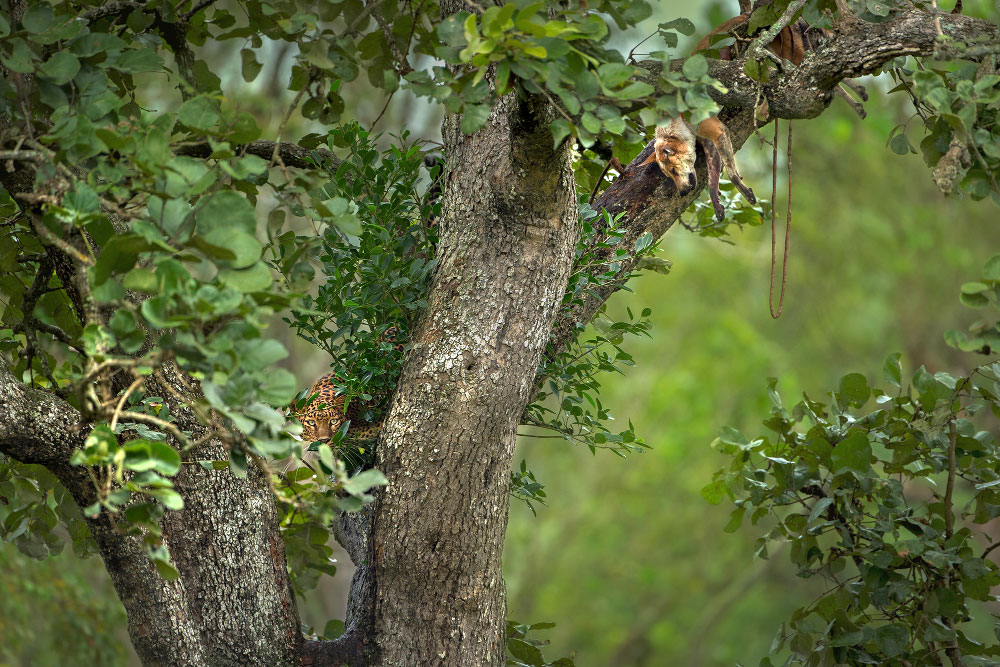 "
"
On September 19, 2020, while exiting the forest after wrapping up our afternoon safari in Bandipur Tiger Reserve, we noticed a free-ranging/feral dog enter the park from the highway. Although we tried our best to chase it back towards where it came from, it ventured deeper inside the forest. We were quite concerned as we had just sighted a tiger cub near a waterhole, 500m from the highway.
The next day, we skipped the morning safari and drove around the highway and the nearby villages. While we were passing by the old reception area, a langur’s alarm call alerted us, and we spotted the langur, which was looking at a tree diagonally opposite. We pulled over in the parking area, and, after a bit more scanning, noticed a kill hanging near the top of the tree. A closer look revealed that it was the same dog we had seen entering the park a day before.
We thought this could be a great opportunity to sight a leopard and decided to wait inside the car. Finally, after a few hours, a leopard appeared and started feeding on the kill. She had a cub with her, but it was more reluctant to break cover.
The entire incident happened across the highway, with vehicles passing by, unaware of the predator. While this is another example of how leopards adapt, it is also a grim reminder of the increasing conflict of wildlife with feral-dogs, bringing with it a high risk of disease and other negative impacts.

 CI is a non-profit, non-commercial portal that aims to facilitate wildlife and nature conservation by providing reliable information and the tools needed to campaign effectively.
CI is a non-profit, non-commercial portal that aims to facilitate wildlife and nature conservation by providing reliable information and the tools needed to campaign effectively.
Chosen as 'Picture of the Week'
A lone feral dog is an easy meal for an ace predator like the leopard, but when dogs form packs they can turn into formidable adversaries. Today, feral dog packs roam with impunity in the buffer zones of many of our Protected Areas, preying on all manner of wildlife. Sadly, this has become an intractable problem, thanks to popular public sentiment that favours the welfare of stray dogs over wildlife.